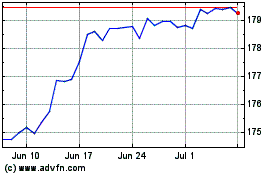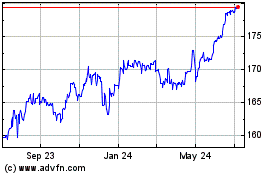UK Job Vacancies Decline; Wage Growth Eases
December 17 2019 - 2:36AM
RTTF2
The UK job vacancies declined sharply and average wage growth
eased slightly, but the unemployment rate remained unchanged at a
44-year low and the employment rate reached a record high, data
from the Office for National Statistics showed Tuesday.
Data showed that vacancies decreased by 20,000 from the previous
quarter to 794,000 during the September to November period. From
last year, vacancies plunged 59,000, which was the biggest fall
since late 2009.
The ILO unemployment rate was largely unchanged at 3.8 percent
in the three months to October, while the rate was expected to rise
marginally to 3.9 percent. The rate was the joint lowest since late
1974.
The number of people out of work decreased by 93,000 to 1.28
million in the year to October.
At the same time, the number of employed persons increased by
24,000 to 32.8 million in the three months to October, with the
employment rate reaching a record high of 76.2 percent.
Earnings excluding bonus grew at a slower pace of 3.5 percent
from the previous year, after rising 3.6 percent. Including bonus,
payments gained 3.2 percent.
In November, the claimant count rate rose marginally to a
seasonally adjusted 3.5 percent from 3.4 percent in October. The
number of people claiming unemployment benefits increased by 28,800
from the previous month.
James Smith, an ING economist said, with Brexit uncertainty
already making a comeback and investment set to remain low in 2020,
hiring appetite is unlikely to improve significantly any time
soon.
Solid labor market may keep the Bank of England away from the
rate cut trigger at Thursday's meeting, Andrew Wishart, an
economist at Capital Economics, said.
With Prime Minister Johnson determined not to extend the
transition period, Brexit uncertainty would not disappear either.
The upshot is that there is larger chance of a rate cut early next
year than most other forecasters think, Wishart added.
According to the Report on Jobs, published by IHS Markit, the UK
labor market conditions remained challenging in November amid
election and Brexit uncertainty. The overall vacancies rose at the
slowest pace since the current upturn began in October 2009.
CHF vs Yen (FX:CHFJPY)
Forex Chart
From Mar 2024 to Apr 2024

CHF vs Yen (FX:CHFJPY)
Forex Chart
From Apr 2023 to Apr 2024
